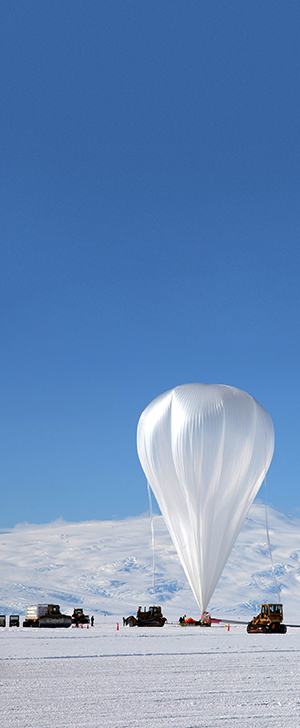Space Blast
 About a year from now, a football-field-sized helium balloon will carry a very large telescope high above Antarctica, where it will peer into the far-flung crevices of the Milky Way.
About a year from now, a football-field-sized helium balloon will carry a very large telescope high above Antarctica, where it will peer into the far-flung crevices of the Milky Way.That powerful telescope will be able to look inside what are known as Giant Molecular Clouds, which give birth to stars, according to Paul Williams, a physics and astronomy graduate student helping to build the telescope in Professor Giles Novak’s lab.
“The telescope will help us learn more about how star and planetary systems form,” Williams says, adding that a main advantage of the balloon-borne telescope is cost: while the Hubble Space Telescope came with a price tag of $2.5 billion, this one costs $10 million.
Williams is part of an international team called the Balloon-borne Large Aperture Submillimeter Telescope — The Next Generation (BLAST-TNG), which is funded by NASA. After the team completes the telescope, its parts will be shipped to Antarctica, with a target launch date of December 2018.
The balloon will rise to 100,000 feet, about three times as high as an airplane flies, and will follow the circular winds over Antarctica. After about a month, researchers will cut the cable that ties the telescope to the balloon, and the telescope will float to land on a parachute.
Then the work continues, as Williams and other researchers will spend years analyzing the collected data— one of many stages on the way to answering big questions about the Milky Way.
“If you want to understand where planets come from in our galaxy, and where we might have a chance of finding life in other places in our galaxy, we really need to understand how stars form at their earliest stages,” Williams says.
Learn More About the BLAST-TNG
Back to top